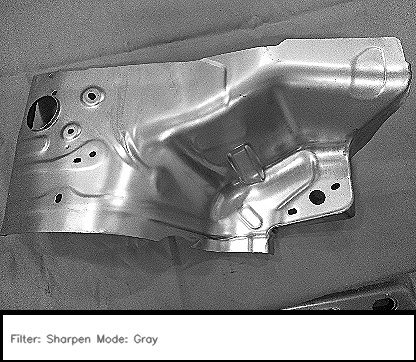🌟 Live Demo available at https://kapilve.pythonanywhere.com/
Classification of a specific automotive part called Fender Apron (shown below) as defective and non-defective using Transfer Learning with an f-1 score of 1.00
functions.pycontains functions for preprocessing of images and making classesMachine defect detection.ipynbis for code walk-throughroutes.pyis the Flask API file- Results folder contain processed images with different kernels of the machine part for manual defect detection. It also contains a document about the approach followed.
- templates contain
index.html, the frontend of the application MobileNet_model_keras.json&MobileNet_model_wieghts.h5are saved model and its weights respectively, which are deployed in our application
The data is already labelled having a total of 250 images with 139 images as healthy machine parts and rest 111 as defective parts. Images given in the dataset were captured from different angles and scales. Training and Test datasets were prepared by randomly selecting a total of 25 images (i.e. 10%) in which 10 were defective and 15 were healthy parts. Training/validation split used is 90/10.
Dataset Link
You will have to segregate them into test and train datasets yourself. To follow the notebook, you should know that I have put these random 25 test images in a new "Test" folder and renamed them as 1.jpg, 2.jpg ..... 25.jpg and put the rest other into "Train" folder with two separate "Train\Defective" and "Train\Healthy" sub-directories.
- To read about approach and architecture used, go to README at Results folder.
